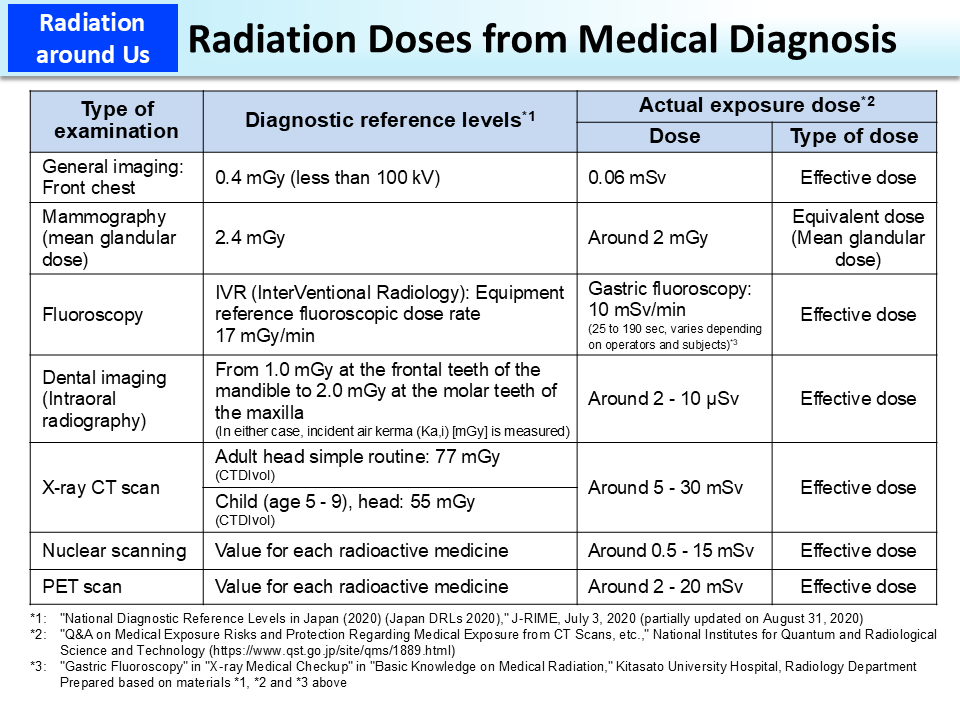Radiation Doses from Medical Diagnosis
Exposure doses from radiological examinations vary by the types of examinations. Some examinations, such as dental imaging, only involve very slight, local exposure, while some other examinations, such as X-ray CT scans and nuclear scanning, involve relatively high exposure doses. Even with the same type of examination, doses could vary widely depending on the medical institution. It is therefore recommended to use the diagnostic reference levels as criteria for determining whether radiation doses from medical diagnosis are appropriate or not. If the average radiation dose of a medical institution greatly deviates from the diagnostic reference levels, the International Commission on Radiological Protection (ICRP) recommends that irradiation conditions for the examination be reconsidered.
Some countries are already using the diagnostic reference levels. In Japan, the Japan Association of Radiological Technologists issued a medical exposure guideline (reduction targets) in 2000, in which they compiled values equivalent to the diagnostic reference levels. It was updated in 2006 as the 2006 medical exposure guideline. The Japan Network for Research and Information on Medical Exposures (J-RIME)1 established Japan's first diagnostic reference levels based on the results of surveys conducted by participating organizations. For the latest diagnostic reference levels, the “National Diagnostic Reference Levels in Japan (2020) (Japan DRLs 2020)” was published on July 3, 2020 (partially updated on August 31, 2020).
- The Japan Network for Research and Information on Medical Exposures (J-RIME) started in 2010 as a base for establishing a medical exposure protection system that matches Japan's circumstances, by gathering expert opinions through cooperation from academic societies and associations, and collecting and sharing domestic and international research information on medical exposures. J-RIME's activities include collecting data on medical exposure, such as exposure doses from radiation therapy and risk assessment, to get a picture of medical exposures in Japan, and building an appropriate protection system for medical exposure in Japan while taking international trends into account.
- Included in this reference material on March 31, 2013
- Updated on March 31, 2024

